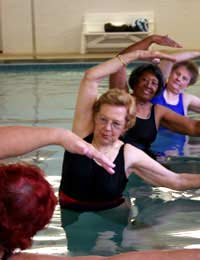Spinal Arthritis

Spinal arthritis is a very painful condition, worse than other forms of arthritis due to the high amount of nerves present in and around the spinal structures, especially those concerning the facet joints and intervertebral discs.
Spinal osteoarthritis, otherwise known as spondylosis, can affect any region of the spine and is caused by the degenerative process.
More common in the over 55s and with women more than men, spinal arthritis can be triggered by an accident, injury or from a weakened immune system.
People who have a family history of spinal arthritis are more likely to develop the condition themselves.
Symptoms
Apart from suffering with high levels of pain, there is the likelihood of having an increased stiffness, especially in the spine, particularly after long periods of rest. Pain can be intermittent and worse on movement.As part of the human body’s natural response to arthritis, an excess of bony growth may occur, resulting in ‘spurs’ being formed. They can cause additional pain and can restrict movement further. Some sufferers report a crunching sound, like bone on bone, possibly due to the growth of the spurs.
Spinal arthritis occurring in the lower back can affect the lower extremities with additional pain in the legs and buttocks. Cervical spine arthritis can cause pain to radiate to the shoulders and arms.
There is no known cure for arthritis but there are a number of treatments available for the relief of symptoms.
Treatment
The treating GP may refer you to an x-ray department in order to confirm diagnosis by a series of images. These pictures will also show any inflammation and if there is any deterioration in the cartilage.Along with this a blood sample can be gained and sent for analysis to determine the type of arthritis. Medications include anti-inflammatory drugs, pain relief, arthritic drugs or steroids.
Spinal spondylosis can cause the intervertebral discs to degenerate which increases the risk of them herniating, a condition that would require further treatment.
Facet joints of the spine can be affected by the deterioration of cartilage or the formation of bony overgrowths and can limit movement significantly. Surgery may be an option to remove the bony growths.
Treatments that can be performed by the patient, without input from a medical professional include giving-up smoking; this will increase the levels of oxygen to the affected area and prevent further deterioration of the discs. Maintaining a healthy weight for your frame will prevent putting excessive pressure and strain on the ligaments and joints of the spine. Applying regular heat or ice therapy, whichever is preferred, will help with pain relief and reduce inflammation. Exercise is a good way of help alleviate symptoms, as arthritis can affect mobility, it may be best to seek advice from a physiotherapist who will work with you and devise an appropriate and manageable programme of exercise.
Spinal arthritis is a painful and restrictive condition. Though there is no cure, it may be prevented or onset delayed by eating a healthy diet, rich in nutrients and calcium (to keep bones strong and healthy), and by ensuring flexibility, strength and suppleness by keeping to a regular exercise regime.


Re: Who is at Risk of Developmental Back Pain?
I have been getting muscle spasms in my lower back for 30 years and when they occur I walk like an old man. I…
Re: A Spinal Tap Caused My Back Pain
When I was 14 I was sent to the emergency room with an illness the doctors couldn't identify. Extremely high fever and high…
Re: A Spinal Tap Caused My Back Pain
I've had spinal meningitis 7 times now. So much scar tissue they have to do x ray with the lumbar puncture. I am having a lot…
Re: A Spinal Tap Caused My Back Pain
Hello I had spinal tap done bout 8 month ago due to a brain aneurysm. I tell you someday they way my back is make me not…
Re: A Spinal Tap Caused My Back Pain
So about 7 or 8 months ago I got a spiral tap preformed due to have being diagnosed with Idiopathic intracranial…
Re: A Spinal Tap Caused My Back Pain
So about 7 or 8 months ago I got a spiral tap preformed due to have being diagnosed with Idiopathic intracranial…
Re: Dehydrated Discs
hI THERE, I have Dyhydration L3/l4 and ll4/l5 and disprotrusion and sequestrated discu after MRI i am aged 52. I had hip pain all night for 3…
Re: A Spinal Tap Caused My Back Pain
Hi . I also had a spinal Tap to check the stages of a bleeiding in my brain. This has caused me serious back pain almost…
Re: Dehydrated Discs
Alex - Your Question:I am a 27 yr old male who up until last year was working 84-108 hrs/week and always had back problems but all the doctors I…
Re: Dehydrated Discs
I am a 27 yr old male who up until last year was working 84-108 hrs/week and always had back problems but all the doctors i had seen told me its…